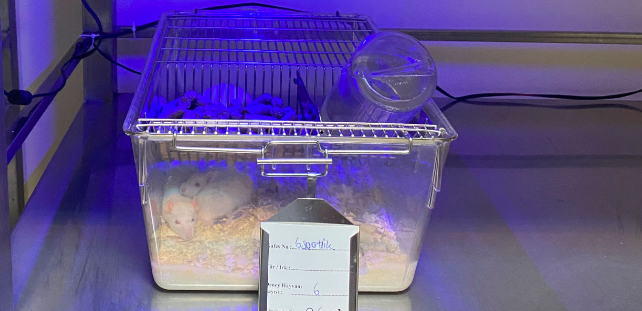
Among the laundry list of health problems COVID inflicted on the world's population, one of the more perplexing was an increase in the number of children experiencing what is known as idiopathic precocious puberty – abnormally early onset of puberty.
More than one study spotted the spike in numbers of this typically rare condition, highlighting a potential link between the virus and a trigger for early adolescence.
A study by researchers from Gazi University and Ankara City Hospital in Turkey suggested it might not have anything to do with the infection at all.
Rather the time spent during lockdowns scrolling through smart devices for hours on end could have been to blame, research suggests.

In two separate studies published in 2023, the researchers exposed immature male and female rats to the light emitted by LED screens, finding those bathed in the blue-tinged light for longer bouts showed the hallmarks of maturity sooner than the rest.
"We have found that blue light exposure, sufficient to alter melatonin levels, is also able to alter reproductive hormone levels and cause earlier puberty onset in our rat model. In addition, the longer the exposure, the earlier the onset," Gazi University endocrinologist and lead author Aylin Kilinç Uğurlu explained when the team's initial results on female rats were revealed.
Though the results couldn't conclusively determine why more children around the world were experiencing early puberty, it's a finding that should be taken seriously as we become increasingly reliant on personalized digital technology.
Statistically speaking, most of us start to experience the joys (and horrors) of puberty by age 12, smack in the middle of a bell curve that stretches anywhere from 9 to 14 in boys and 8 to 13 in girls.
Precocious puberty for girls is defined as signs of secondary sexual characteristics emerging before the age of eight. For boys, it's aged nine. Just how many children that encompasses is difficult to say with confidence as measures on the condition's prevalence vary considerably around the world.
The reasons for the early surge of hormones are also something of a mystery. Putting aside forms of cancer or other disorders of the nervous system, a good proportion are idiopathic, meaning there's just no obvious cause.
So when the number of girls reporting an idiopathic form of precocious puberty in Turkey jumped from 25 in April 2019 to 58 in March 2020, researchers were stumped, proposing anything from high calorie foods to the fear of the pandemic might be to blame.
One intriguing possibility was the stark rise in use of smart devices. Or, to be more precise, a significant increase in time spent exposed to the blue light emitted from our phones and tablets each day.
Being the diurnal animals we are, evolution has shaped our bodies to interpret the blue tinge of daylight as prime waking time, and the less vibrant glow of dawn, dusk, and evening as ideal for resting.
This relationship could be so deeply hardwired into our functionality, any serious disruption to the pattern could mess with our health in profound ways, most likely by disrupting the tides of a hormone called melatonin.
While it's generally seen as the chemical that helps send us off to sleep in the evening, melatonin's inhibition at a crucial time in our development could also tell the body it's go-time for ramping up the hormones that prepare the body for puberty.
Using rats as a more convenient test subject, the team of researchers demonstrated this hypothesis could have a lot going for it.

Not only did the male and female rats exposed to relatively higher durations of blue light each day undergo their rodent version of puberty at a relatively younger age than their peers, they also had lower melatonin levels and higher levels of reproductive chemical signals such as oestradiol and luteinising hormone.
This doesn't imply other factors couldn't also play an important role. The biology of puberty is incredibly complex, leaving plenty of room for a wide variety of influences to be shaping the timeline of adolescence in humans.
"As this a rat study, we can't be sure that these findings would be replicated in children but these data suggest that blue light exposure could be considered as a risk factor for earlier puberty onset," Uğurlu explained in 2022.
This research was published in The Journal of Clinical Research in Pediatric Endocrinology and Frontiers in Endocrinology.
An earlier version of this article was published in September 2022, following the initial study on female rats. The information has been updated to include details on a follow-up investigation that found male rats were similarly affected.